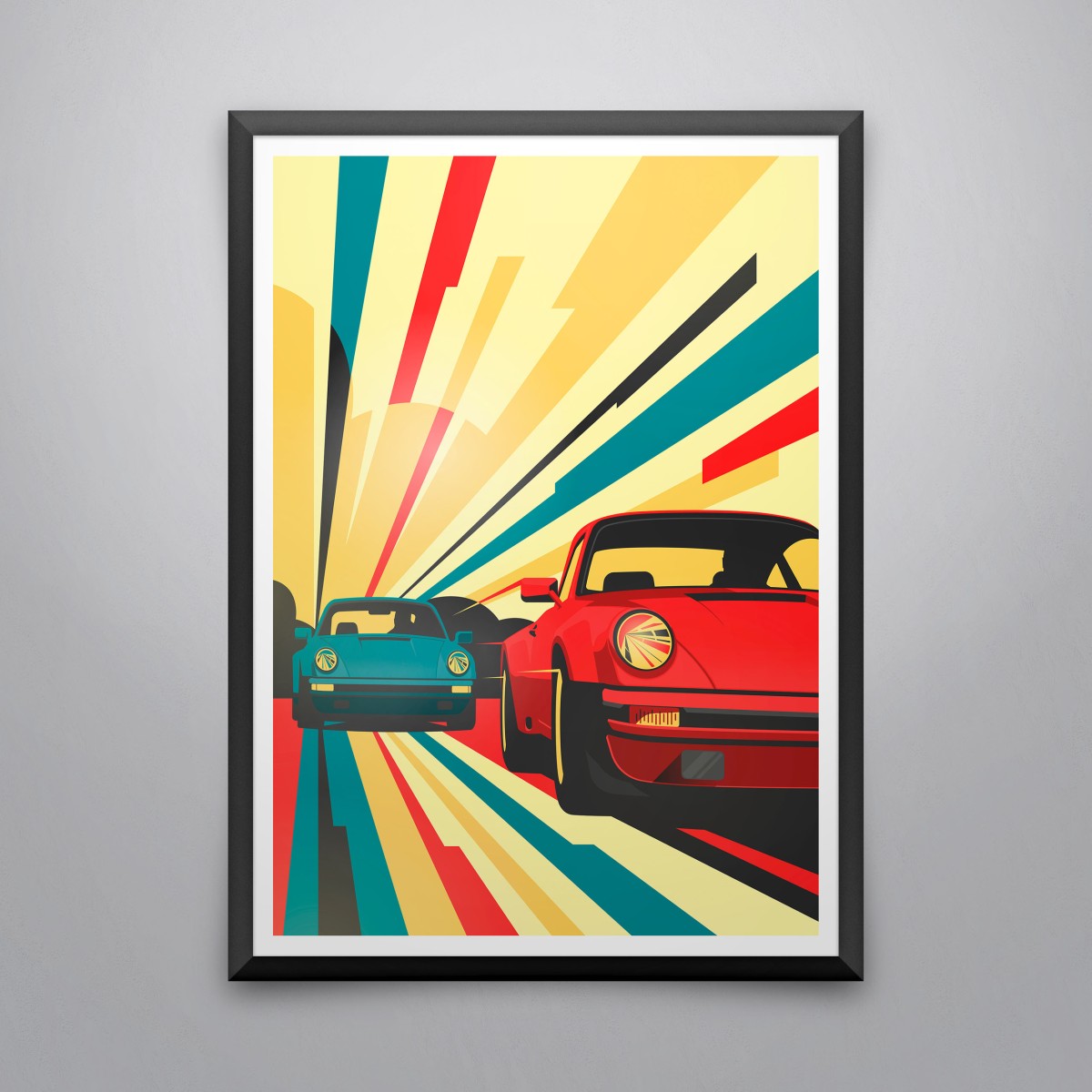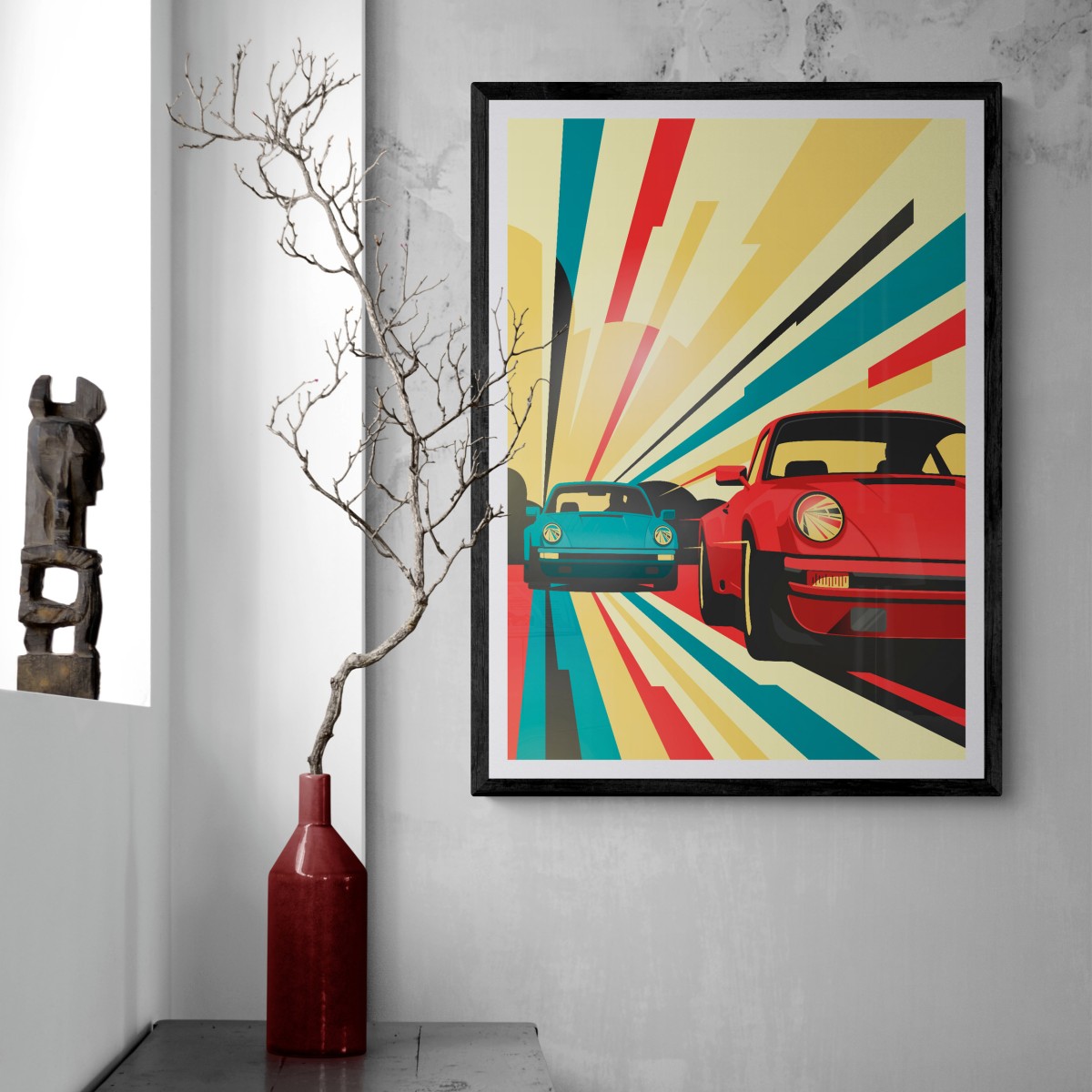Porsche has accomplished the near impossible throughout its brand lifetime; not just ageing well in a time of automotive development but also remaining a top-competitor at all times. With the almost 60 years old 911 model, Porsche has put an icon in the world that everyone knows – from small children to old people not having a care in the world about cars at all.
Where it all started
Very few people actually know that the 911 got its design roots from the most unlikely of cars – the iconic 1930s VW Beetle. The lineage is as follows: Ferdinand Porsche the younger aka “Butzi” made the design of the 911 in 1963, and Butzi’s grandfather (Ferdinand Porsche the elder) designed the VW Beetle in the early ‘30s.
Even less people still know that Porsche’s 911 was actually named the 901 when it was first designed in 1963. However, this name caused trouble with Peugeot for 3 digit model names with a “0” in the middle was their shtick, and they weren’t going to share it with anyone else! While externally Peugeot still has the rights to this 3-digit number combination, internally Porsche keeps the 911’s vehicle number at 901.
The drivetrain of the original 911 was powered by an air-cooled 2000cc flat 6, with the iconic engine mount in the rear of the car. Although much of the 911’s original looks and configurations have stayed the same overtime, Porsche did make various improvements throughout the years.
Tweaking the Porsche 911 design
The Porsche 911 is still the classic shape that Butzi drew in 1963, but the rest of its design only lasted a total of 3 decades – until 1993. The 911’s engine, however, has always stayed rear-mounted and while you would expect the engine’s weight to tip the car’s balance, the 911 has always been famous for being Porsche’s best handling car.
However, when there was a rumor going that the United States would forbid convertible cars; Porsche introduced the 911 Targa in 1981 – the name being an ode to their success on the Targa Florio racetrack. The 911 Targa was a semi-convertible car – Targa is now their trademark name for such vehicles – that became available for consumption in 1983.
Then, in 1988, Porsche introduced the 964 – a model that copied most of the unique design features that characterized the 911. Another half decade later the Porsche 993 came out, which was the last model with an engine that was air-cooled like the 911 originally started out with.
Subsequently, in 1998 the classic 911 design was left even further behind and the result was the Porsche 996. Even though the new design with headlights in the form of a teardrop was not received well by Porsche’s fan base, the 996 is still Porsche’s most sold 911 model of all times. Still, Porsche listened to its loyal fans, and in 2004, the German marque changed the headlights back to its traditional form in the Porsche 996. Save from a little facelift in 2009, the 996’s design has remained largely unchanged after its release.
Developing the Porsche 911 powertrain
The 2.0 liter that powered the original 911 has of course been upgraded various times throughout the years as well. The 2000cc was quickly increased to a displacement of 3000cc in the Porsche 911 Turbo of 1975. Then it went on to 3200cc, and then to 3600cc in the Porsche 964 engine of 1988.
From the Porsche 993 onward, a second turbocharger was added on top of the first one, and the contemporary 911 Turbo even has three turbochargers that boost the powertrain. Finally, Porsche implemented a 4WD system to max out the already superb handling that the 911 series is celebrated for.
A timeless car marque
In a timeframe of only 8 years (2004 – 2012) Porsche rolled over 213 thousand 997s out of its factory. In 2008, the 997 model got an update with direct fuel injection in order to increase performance but decrease its emissions and fuel consumption. Especially the latter 2 factors are increasingly important to compete in the 21st century – even for a timeless sports car like the 911.
Over the decades, Porsche has constructed the 911 model over 1 million times. The most striking statistic, however, remains the fact that roughly 70 percent of these million+ 911s are still roadworthy today! Even after passing the half-century mark, Porsche’s 911-based models remain among the most popular sports cars for enthusiasts today.
While the 911 has always been Porsche’s flagship model, the German marque has a created far bigger car assortment than that. Today, the Porsche Cayenne, Panamera, and Cayman are also increasingly popular models. These premium car models have expanded Porsche’s market segment from a designer and producer of sports- and racecars to a versatile all-round car marque that demands respect across the entire world.
We, Colors of Speed, have created this Porsche 911 poster to pay homage to the automotive legend and transform your walls into iconic pieces of art.












